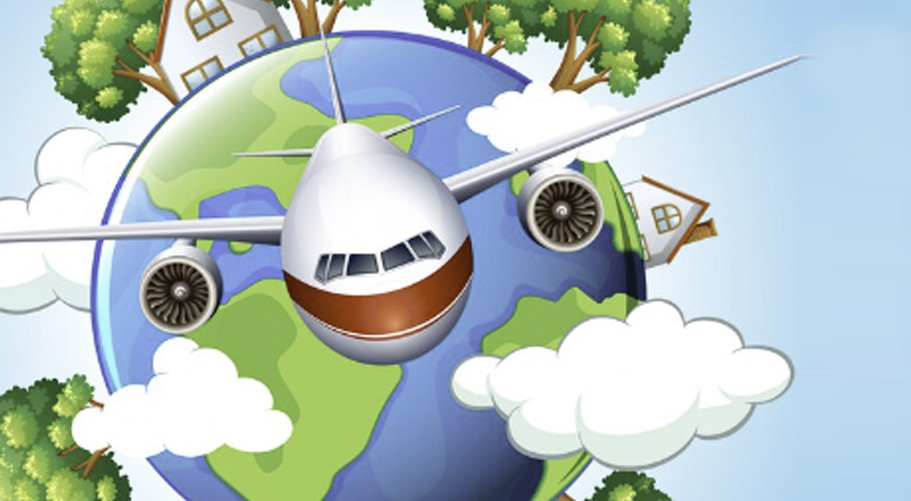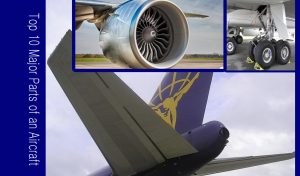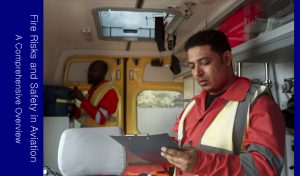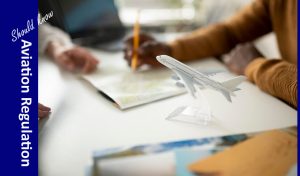The aviation industry has a significant environmental impact, primarily due to greenhouse gas emissions, noise pollution, and habitat disruption. Addressing these challenges requires a multifaceted approach that combines technological advancements, policy changes, and consumer behavior. In order to address the line “Challenges and Solutions to The Environmental Impact of Aviation” here are some of the key challenges and potential solutions to mitigate the environmental impact of aviation:

Challenges
The environmental impact of aviation is a complex problem with a number of challenges. Some of the key challenges include:
- Reducing emissions without sacrificing performance or affordability: Aircraft engines are highly efficient, but they still burn a lot of fuel. And developing new technologies that can significantly reduce emissions is a complex and expensive process.
- Coordinating international action: The aviation industry is highly globalized, so any solutions to its environmental problems will need to be coordinated at the international level. This can be difficult to achieve, as different countries have different priorities and levels of development.
- Public awareness and support: Many people are unaware of the environmental impact of aviation, and there is not always strong public support for policies that would reduce emissions.
Here are some specific examples of the challenges facing the aviation industry:
- Sustainable aviation fuels (SAFs): SAFs are still more expensive than conventional jet fuel, and production capacity is limited.
- Electric aircraft: Electric aircraft are still in their early stages of development, and it is not clear when they will be commercially viable.
- More efficient aircraft designs: New aircraft designs can be expensive to develop and produce.
- Improved flight operations: Airlines may need to invest in new technology and training in order to optimize their flight operations.
- Government policies: Governments may need to implement new policies, such as carbon pricing and emissions standards, in order to incentivize airlines to reduce their emissions.
Despite these challenges, there is growing recognition of the need to address the environmental impact of aviation. The aviation industry is working to develop new technologies and solutions, and governments are exploring new policy options. It is important to note that there is no single solution to this problem. A combination of approaches will be needed to achieve significant reductions in emissions.
Individuals can also play a role in reducing the environmental impact of aviation. By flying less, choosing more fuel-efficient flights, and flying with airlines that are committed to sustainability, individuals can help to make a difference.
Solutions
There are a number of potential solutions to the environmental impact of aviation. Some of these solutions are already being implemented, while others are still in development.
One way to reduce emissions is to improve the fuel efficiency of aircraft. This can be done by developing new engine designs and using lightweight materials in the construction of aircraft. Another way to reduce emissions is to use sustainable aviation fuels (SAFs). SAFs are made from renewable sources, such as waste oils and agricultural residues, and they can produce significantly fewer emissions than conventional jet fuel.
Airlines can also reduce their environmental impact by optimizing their flight operations. This includes things like reducing taxi time and flying at more efficient altitudes. Airlines can also encourage passengers to reduce their baggage weight and to choose more fuel-efficient flights.
Finally, governments can play a role in reducing the environmental impact of aviation by implementing policies such as carbon pricing and emissions standards.
Here are some specific examples of solutions that are being implemented or developed:
- Sustainable aviation fuels (SAFs): SAFs are already being used by some airlines, and production is expected to increase significantly in the coming years. SAFs can reduce CO2 emissions by up to 80% compared to conventional jet fuel.
- Electric aircraft: Electric aircraft are still in their early stages of development, but they have the potential to revolutionize the aviation industry. Electric aircraft would produce zero emissions, which would help to reduce the environmental impact of aviation.
- More efficient aircraft designs: Aircraft manufacturers are developing new aircraft designs that are more fuel-efficient. For example, the Boeing 787 Dreamliner is 20% more fuel-efficient than the Boeing 767.
- Improved flight operations: Airlines are using technology to optimize their flight operations and reduce emissions. For example, airlines are using software to plan more efficient flight routes and to reduce taxi time.
What individuals should do?
Individuals can also play a role in reducing the environmental impact of aviation. Here are a few things that individuals can do:
- Fly less: If possible, try to fly less. This could mean taking fewer vacations, or traveling by train or bus instead of by plane.
- Choose more fuel-efficient flights: When booking a flight, look for flights that are more fuel-efficient. This means choosing flights that are direct, and avoiding flights that have long stopovers.
- Fly with airlines that are committed to sustainability: There are a number of airlines that are committed to reducing their environmental impact. These airlines are investing in new technologies, such as SAFs and electric aircraft.
- Offset your emissions: There are a number of organizations that offer carbon offset programs. These programs allow you to offset the emissions from your flight by investing in projects that reduce greenhouse gas emissions.
By taking these steps, individuals can help to reduce the environmental impact of aviation.
In addition to the above, here are some other potential solutions to the environmental impact of aviation:
- Advanced air mobility (AAM): AAM refers to a new generation of aircraft that are designed to be more efficient and environmentally friendly than conventional aircraft. AAM aircraft include electric vertical takeoff and landing (eVTOL) aircraft and drones.
- New air traffic control systems: New air traffic control systems can help to reduce emissions by optimizing flight routes and reducing traffic congestion.
- Market-based measures: Market-based measures, such as carbon pricing and emissions trading, can incentivize airlines to reduce their emissions.
It is important to note that there is no single solution to the environmental impact of aviation. A combination of approaches will be needed to achieve significant reductions in emissions.
What is the future of aviation and the environment?
The aviation industry is committed to reducing its environmental impact. The industry is investing in new technologies, such as SAFs and electric aircraft, and it is working to improve the efficiency of its operations. However, more needs to be done to reduce the environmental impact of aviation. Governments can play a role by setting ambitious environmental targets for the aviation industry and by providing financial support for research and development of new technologies. Individuals can also play a role by reducing their own air travel and by offsetting their emissions.









